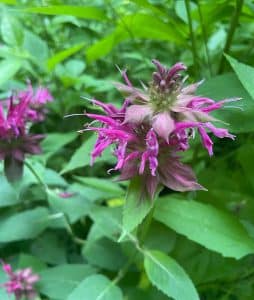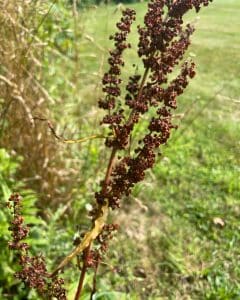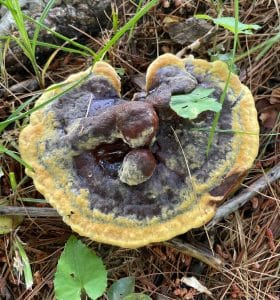The star of the autumn garden is the pumpkin! This iconic squash’s round shape and bright orange color are found in imagery surrounding harvest festivals all through the season, to include modern American favorites Halloween and Thanksgiving. Pumpkin pie is a beloved dessert for fall festivities, though the squash also lends itself well to soups, bread, and a host of sweets from cakes to cookies to muffins. The seeds, roasted and salted, are a popular snack.
But what are the origins of the pumpkin? Were its ancestors similarly rotund and orange, or did the pumpkin have a more humble origin?
Ancient Roots
You may have heard of the Three Sisters, the combination of corn, beans, and winter squash grown by the Iroquois and other northeastern indigenous cultures. Not only do these three plants grow well together, but they have provided their people a wealth of nutrition for many generations. Perhaps the best known symbol of the squash “sister” is the pumpkin. But where did this plant come from?
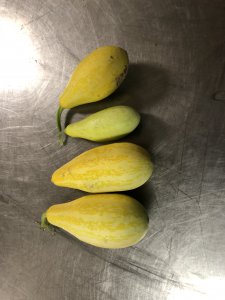
The pumpkin’s scientific name is Cucurbita pepo. The species name originates from the Greek pepon, meaning “big melon”, appropriate since the sorts of gourd that include pumpkins weren’t found in Europe before the colonization of the Americas. The French changed this to pompon, and then the English morphed it over to pumpion (which even found its way into Shakespeare’s Merry Wives of Windsor. When the English colonized North America, they once again changed the word to our now-familiar “pumpkin”, and instead of applying to melons they used it to describe a particular type of squash that had been domesticated by indigenous communities thousands of years before.
Cucurbita pepo is primarily domesticated, but wild C. pepo plants can still be found in parts of Mexico. The species’ natural range once extended far up the Mississippi River, east to Florida, and perhaps north to New England. Their fruits are much smaller, round gourds with smooth skin compared to the deeply furrowed surface of today’s pumpkin. They are also quite inedible, being bitter and indigestible. They had evolved to be eaten and their seeds distributed by certain species of paleolithic megafauna like mastodons, which had gone extinct by the time domestication efforts began.
Given that C. pepo may very well be among the earliest domesticated plants in the Americas, if not the earliest, it can be difficult to ferret out the exact origin of this ancient species. It is likely that it developed through generations of domestication of another Cucurbita species, with some of the eventual C. pepo plants remaining in the wild, and others eventually becoming a wide variety of fully domestic cultivars. The two best candidates for the wild plant’s origin are Cucurbita texana and Cucurbita fraterna. Rather than a battle between the two for recognition, it is quite likely that specimens of both C. texana and C. fraterna were put through the process of domestication at different times, the former in the eastern United States and the latter in Mexico. It is also entirely possible that C. texana and C. fraterna hybridized with domesticated C. pepo later on. Because domesticated C. pepo‘s phenotype can vary so widely, we have to compare the fruits and other traits of the wild C. pepo plants that remain with the other two species, and find that there are similarities all around.
The Prolific Pepo

Except wait—the Cinderella pumpkin isn’t like the others I’ve mentioned so far. C. pepo isn’t the only traditionally pumpkin-shaped squash in town; it’s just the best known. In fact, while cooking pumpkins are cultivars of C. pepo, the pumpkins you see sold for carving may often be Cucurbita maxima, which was domesticated in South America from the wild species C. andreana thousands of years ago and brought to North America by Europeans within the past few centuries. C. maxima is also the source for unusually shaped pumpkins like the Cinderella, the Long Island cheese wheel, and the elongated Dickinson pumpkin. This last cultivar was bred into a particular variety by the canned food company Libby’s to create millions of cans of “canned pumpkin” each year.
There are two other Cucurbita species worth mentioning. You’ve almost certainly seen C. moschata in the store as butternut squash, but it also moonlights as another variety of Libby’s canned pumpkin. C. argyrosperma, formerly known as C. mixta, was cultivated from wild C. sororia in Jalisco. It isn’t as widespread as some of the other domesticated Cucurbita species, but some cultivars grow green and yellow striped pumpkin-shaped fruit. To further confuse matters, the various sorts of Cucurbita are capable of hybridizing, which leads to blended phenotypes. And if that wasn’t enough, sources sometimes disagree about which Cucurbita species is responsible for which domesticated cultivar.
Does this mean that C. pepo is passé? Not at all. It is still grown on millions of acres for cooking and carving pumpkins. While several species share the term “pumpkin” and may be recognized by the casual observer as such, it is C. pepo that is considered the “true pumpkin”. The Connecticut field pumpkin, one of the best-known carving pumpkins, is a C. pepo cultivar. It was further refined into the Howden strain, more fit for widespread commercial production, and the New England pie pumpkin, a popular heirloom option for baking.

- Zucchini
- Yellow crookneck squash
- Yellow summer squash
- Acorn squash
- Spaghetti squash
- Delicata squash
- Pattypan squash
- Inedible decorative gourds
All of which makes it a truly fascinating plant with a lot of genetic and culinary versatility!
The Useful Pumpkin
Because wild C. pepo and its relatives are not exactly easy to eat, it’s thought that they were first domesticated to be dried and hollowed out into vessels, much as they were worldwide for thousands of years from Asia to Africa. Their increased palatability may have begun as an unintended side effect of this practical breeding, or it may have been intentional from the beginning. Either way, this benefited the pumpkin as humans now replaced the extinct megafauna that had been its original seed dispersers. Better yet, humans went out of their way not only to plant the seeds, but make sure the plants grew up strong, and those with the best genes were proliferated into the future.
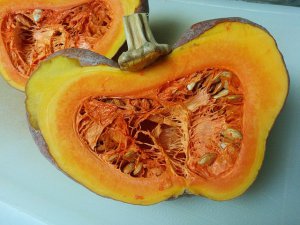
In addition to culinary uses, both pumpkin flesh and seeds have been used by both indigenous and other people for medicinal purposes, particularly digestive. The high fiber content helps to aid digestion. Both groups of people used them to remove worms from the digestive tract, a purpose echoed in the Cucurbita moschata seeds enrolled in Chinese medicine for the same purpose. As a high fiber, low calorie food—about 45 calories in a half cup of Libby’s canned pumpkin, for example—pumpkin can aid in cutting calories when needed. Pumpkins are also very high in vitamin A, as well as being high in vitamins B2, B6, C, E, and K, copper, iron, magnesium, and potassium.
Of course, there’s nothing wrong with a little indulgence, and pumpkin pie hits the spot. Originating from a dish made by cooking milk and ginger in a hollowed-out pumpkin, this pie became popular in the 19th century. But it wasn’t just a simple dessert. Pumpkins were almost entirely grown on small, family-owned farms in the North, as opposed to Southern plantations using cruel slave labor. The cultivation and use of pumpkins became a conscious symbol of the abolition movement. Additionally, Romantic writers tied pumpkins to an idealized backwards view toward agricultural roots even as New England became increasingly urbanized. Pumpkin pie, therefore, carried a wealth of meaning far beyond its simple culinary pleasures.
The New Jack O’ Lanterns
Beginning in the early 19th century, Americans began to carve pumpkins as Jack O’Lanterns for Halloween. They lended themselves more readily to this purpose than the turnips and other root vegetables that had been the traditional carving vegetables in Europe. Halloween originated from the Gaelic holiday of Samhain, which was a time to honor the dead and the final harvest to prepare for the winter ahead.

The popularity of the Jack O’Lantern continued across the Atlantic in the United States. Not only did the pumpkin replace smaller, tougher root vegetables as the carving medium of choice, but it even sparked one of the most notorious Halloween tales. Washington Irving penned “The Legend of Sleepy Hollow” in 1820, featuring the terrifying Headless Horseman who hurled his disembodied head at unlucky travelers. Irving himself did not specifically say that the Horseman used a Jack O’Lantern as a replacement head. However, the story ends with people finding the hat of his victim, the vanished Ichabod Crane, next to a shattered pumpkin, which suggests the Jack O’Lantern-head connection after all.
From the incredibly valuable domesticated food of multiple indigenous cultures in North America, to the popular symbol of United States harvest festivals, from the crown jewel of a classic American horror tale, to an edible argument for freedom for all—and, of course, as a plant that has taken dozens of forms—the pumpkin is a truly admirable member of the agricultural rolls.
—————
Written by Rebecca Lexa
Rebecca Lexa is a certified Master Naturalist in the Pacific Northwest. She teaches classes on foraging and other natural history topics, both online and off. More about her work can be found at http://www.rebeccalexa.com.
Many of our readers find that subscribing to Eat The Planet is the best way to make sure they don't miss any of our valuable information about wild edibles.
See our privacy policy for more information about ads on this site

